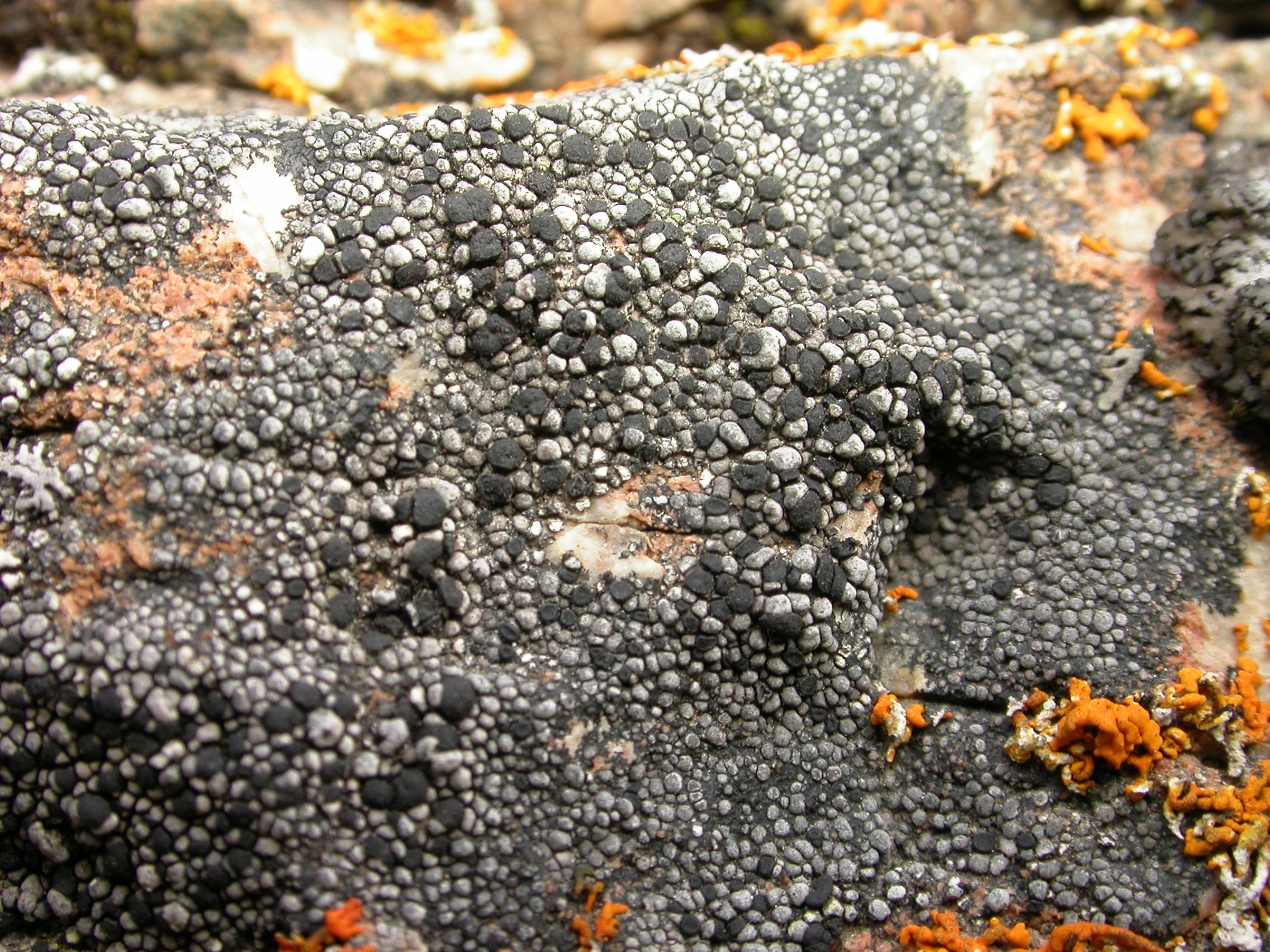Rhizocarpon disporum
- Innhold
- Morphology
- Chemistry
- Habitat
- Comment
- Look-alikes
Morphology
Thallus areolate, up to 10 cm diam.; hypothallus well developed, black; areolae up to 0.8 mm diam., medium grey, dull, contiguous, orbicular or partly angular, weakly to moderately convex; medulla KI–. – Apothecia up to 0.8 mm diam., black, epruinose, orbicular to angular, plane to weakly convex, remaining marginate; excipulum brownish black in the rim, pale brown the inner part, often containing crystals dissolving in K, brown pigment K+ red; hypothecium dark brown, K–; hymenium colourless to faintly green; epihymenium reddish brown, lacking crystal, K+ red; ascospores 1 per ascus, eumuriform, soon becoming dark greenish brown, 48–78 × 18–33 µm. – Conidiomata not seen.
Chemistry
Stictic acid or no lichen substances; spot tests: medulla PD+ orange, K+ yellow or PD–, K–; C–.
Habitat
On calciferous rock at exposed, south to west facing localities.
Comment
The species differs from R. geminatum mainly in having only a single spore in the ascus (not two). There is also a tendency of R. disporum having smaller and more angular apothecia. Great care is needed when examining the asci: one must study several asci and preferably look for semi-mature ascospores to make sure all asci are one-spored. Rhizocarpon subgeminatum and R. suomiense also have a reduced number of spores in the ascus (normally two), but the spores remain hyaline or become at most faintly green by age.

